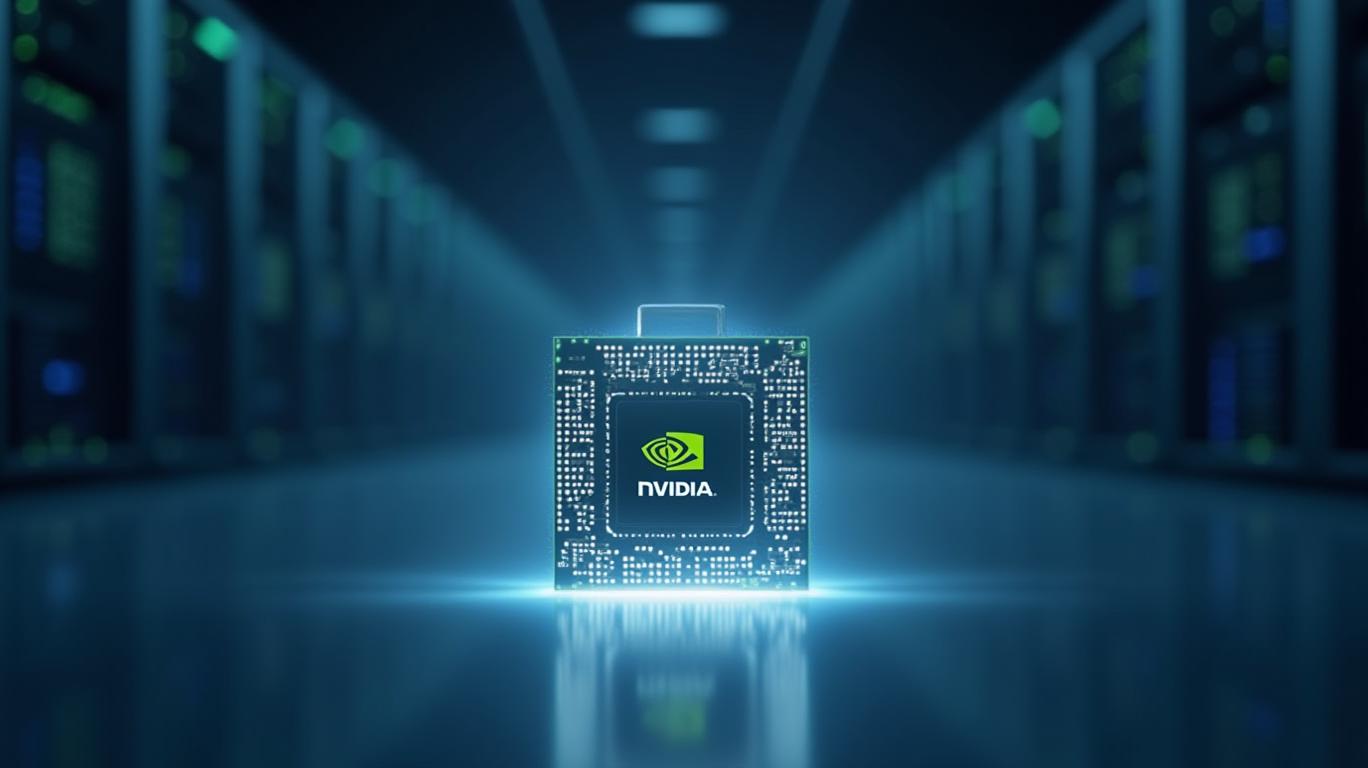Navigating Tariff Uncertainty: Why Tech and Auto Sectors Are the New Safe Havens
In an era of escalating trade wars and geopolitical realignments, investors face a stark choice: cling to traditional sectors buckling under tariff pressures or pivot to industries leveraging strategic partnerships and technological dominance. The tech and auto sectors are emerging as the ultimate battlegrounds—and opportunities—for those seeking resilience. Let's dissect why Nvidia's AI-driven geopolitical gambit and Stellantis's post-CEO reinvention make compelling buys, while retailers like Macy's remain caution zones until trade clouds clear.
The Tech Sector's Geopolitical Playbook: NVIDIA's AI Supremacy
NVIDIA (NASDAQ: NVDA) isn't just a chipmaker—it's now a linchpin of U.S.-Saudi geopolitical strategy. The May 2025 deal to supply Saudi Arabia's HUMAIN with 18,000 Grace Blackwell AI chips marks a watershed moment. These chips will power a 500-megawatt hyperscale AI data center, positioning Saudi Arabia as a global AI hub.

The strategic brilliance? The U.S. has relaxed export rules for
, enabling sales to allies like Saudi Arabia while restricting China to downgraded models. This bifurcated strategy creates a moat around NVIDIA's technology—and its stock.The stock has surged 140% since 2023, outpacing the S&P 500. But with AI adoption still in early innings, this could be the tip of the iceberg.
Investors should note: NVIDIA isn't just selling hardware. Its Omniverse platform and collaboration with Saudi's Data & AI Authority (SDAIA) to train sovereign AI models signals a long-term play for control over critical infrastructure. This isn't just about chips—it's about owning the digital nervous system of nations.
Stellantis: Navigating Auto Volatility with Hybrid Agility
Stellantis (NYSE: STLA) faces a precarious balancing act: tariffs on Mexican/Canadian imports, U.S. political headwinds, and EV competition. Yet its restructuring under CEO Antonio Filosa offers a path to resilience.
The key moves:
1. Hybrid Compromises: Delaying full EV transitions to focus on hybrids (e.g., Ram 1500 Ramcharger) sidesteps U.S. anti-EV policies while keeping emissions in check.
2. Brand Rationalization: Pruning underperforming marques like Alfa Romeo and doubling down on Jeep and Chrysler creates focus.
3. Localization: Negotiating with suppliers to boost U.S. content ratios reduces tariff exposure, even as plants in Mexico/Canada remain critical.
Critics cite its Q1 2025 revenue drop (14% YoY) and stock's 39% decline since 2023. But the pivot to hybrids and cost cuts (e.g., 500 jobs cut at its Melfi plant) are tactical moves to survive—and thrive—when trade winds shift.
STLA's stock lags peers, but its hybrid strategy and cost discipline position it to rebound once tariff clarity emerges.
Historically, a buy-and-hold strategy triggered on earnings days delivered an average return of 41.11% over 20 trading days, though with significant volatility. The strategy faced a maximum drawdown of -36.52%, reflecting sharp swings in investor sentiment. While the upside potential is compelling, the high-risk profile—evidenced by a Sharpe ratio of 0.34—underscores the need for careful timing amid geopolitical and regulatory uncertainties.
Retail's Wound: Why Macy's Is a Cautionary Tale
While tech and autos innovate, traditional retailers like Macy's (NYSE: M) are collateral damage. The company's 2025 sales guidance ($21B–$21.4B) is a 5% drop from 2024, with EPS forecasts slashed by 20%. Tariffs are the culprit:
- Input Cost Squeeze: 145% tariffs on Chinese goods forced Macy's to absorb higher costs while consumers retreat to value brands.
- Structural Weakness: Closing 64 stores in 2024—and planning 86 more—signals a shrinking footprint in a market where every square foot is a liability.

While the S&P 500 rose 18%, Macy's stock plummeted 34%. This isn't a temporary dip—it's a sector-wide retreat.
The broader retail sector mirrors this: Walmart and Target also slashed forecasts, while luxury divisions (e.g., Bloomingdale's) show resilience. But for mass-market retailers, the calculus is grim—tariffs and inflation are structural, not cyclical.
The Investment Thesis: Pivot to Tech, Avoid Discretionary
Overweight Tech Leaders (NVIDIA):
- Their geopolitical leverage (Saudi partnerships, U.S. export rules) insulates them from trade wars.
- AI adoption is a multi-decade trend—NVIDIA is the infrastructure provider.
Neutral to Underweight Auto (Stellantis):
- Wait for tariff clarity and EV demand to stabilize. Stellantis's hybrid strategy is a stopgap, not a silver bullet.
Underweight Retail (Macy's):
- Margin pressures and structural declines in consumer spending make this sector a risk until inflation and trade policies ease.
Final Call to Action
The writing is on the wall: tariffs and geopolitical realignments aren't temporary hiccups. Tech giants like NVIDIA are rewriting the rules of influence through AI, while Stellantis's hybrid gambit buys time—but only tech offers true moats. Retail, meanwhile, is a minefield.
Investors: Deploy capital where technology and strategy meet geopolitical need. The future belongs to those who code it—and control it.
The divergence is stark. Choose your side.

Comments
No comments yet